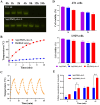Lipid-Coated Ag@MnO2 Core-Shell Nanoparticles for Co-Delivery of Survivin siRNA in Breast Tumor Therapy
- PMID: 40433119
- PMCID: PMC12106909
- DOI: 10.2147/IJN.S510514
Lipid-Coated Ag@MnO2 Core-Shell Nanoparticles for Co-Delivery of Survivin siRNA in Breast Tumor Therapy
Abstract
Objective: Nanoparticles constructed with silver/manganese dioxide (Ag@MnO2) as the core, in conjunction with survivin siRNA (sis) and cyclo(RGD-DPhe-K) (Ag@MnO2-sis-c-L), were prepared for integrated tumor diagnosis and therapy.
Methods: Ag@MnO2-sis-c-L particles were prepared and characterized. The silver and manganese content were determined by inductively coupled plasma optical emission spectroscopy (ICP-OES). The stability of sis in the system was evaluated by incubation with 50% FBS before the agarose gel electrophoresis experiment. The in vitro photothermal conversion ability, cytotoxicity to 4T1 cells, and cellular uptake of preparations were evaluated. The dialysis technique was employed to determine the in vitro release profile of Ag and Mn from Ag@MnO2-sis-c-L under various pH conditions. The pharmacokinetic behavior and tissue distribution of silver in vivo were detected by ICP-OES. Animal model experiments were conducted to further evaluate the anti-tumor efficacy of Ag@MnO2-sis-c-L against breast cancer in combination with infrared irradiation.
Results: Our newly synthesized Ag@MnO2-sis-c-L nanoparticles displayed superior physicochemical properties. The combined application of these nanoparticles with photothermal therapy (PTT) exerted the strongest synergistic inhibitory effects on tumor growth. Survivin protein expression in tumor tissues were markedly suppressed following delivery of nanoparticles loaded with sis. Additionally, magnetic resonance imaging revealed the high imaging capability of hybrid nanoparticles.
Conclusion: This study supports the potential utility of Ag@MnO2-sis-c-L coupled with PTT in therapeutic and diagnostic imaging applications.
Keywords: Ag@MnO2; breast cancer; combination therapy; photothermal therapy; survivin siRNA.
© 2025 Zhang et al.
Conflict of interest statement
The authors report no conflicts of interest in this work.
Figures





References
MeSH terms
Substances
LinkOut - more resources
Full Text Sources
Medical

